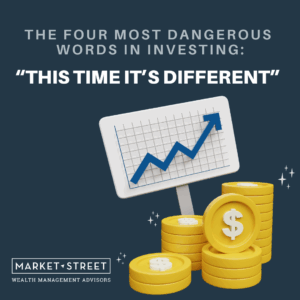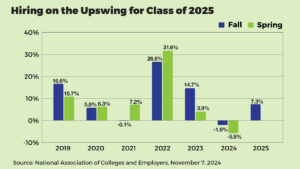It has been a wild week in the markets which was led by an 800-point drop on Wednesday in the Dow Jones Industrial Average. Why did this happen and what does it mean? Over the course of the week, you have probably heard about a possible Recession, Inverted Yield Curve, and China Trade-War.
Most of the volatility this week was geared around the fear of an impending recession. A recession is defined as two consecutive quarters of negative economic growth as measured by a country’s gross domestic product (GDP). In Q2 2019, the US GDP slowed to 2.1%, down from 3.1% in the first quarter of 2019. While growth slowed quarter-over-quarter, our economy is still growing and is well above the negative GDP levels required for a recession. Furthermore, we continue to see jobs being added and a historically low unemployment rate of 3.7%, the lowest level in 50 years. Lastly, consumer confidence remains high and consumers keep spending (68% driver of US GDP).
I hope we can agree, based on the technical definition, that the US economy is clearly not in a recession based on positive GDP growth, low unemployment, and a strong consumer. So why do we keep hearing the dreaded “R” word?
It is driven by the inverted yield curve. Every recession of the last 60 years has been preceded by an inverted yield curve, which occurs when the interest rates on short-term bonds are higher than the interest rates on long-term bonds. This happens when investors start piling into safer long-term investments (flight to safety), thus driving down the longer-term yield.
The 800-point drop on Wednesday was a direct result of the inverted yield curve as the 10-year treasury temporarily fell below the 2-year treasury yield for the first time since 2007. While this may signal some concerns, there are several reasons to remain optimistic that a recession is not imminent. As history shows (more on that below), it can take months or even years before a recession starts after an inverted yield curve (18 months on average). In addition, the trade-war with China has caused a global economic slow-down leading to increased investment in US treasuries. This has aided in the inverted yield curve. Thus, the inversion of the yield curve may be artificially driven, more so than economically, and could self-correct with a future trade-deal.
What Do You Do With This Information? Should You Care?
Now that you know what caused this week’s market volatility, what should you do about it? Fortunately, we have the luxury of data and history to steer our investment decisions, known as evidence-based investing. Below is one of my favorite tweets by Morgan Housel (financial columnist/author).

This clearly illustrates that investors who buy and hold US stocks have been rewarded over the long-term. I can state this point, because now we have the advantage of seeing this plotted over time. In 1989, Robert Shiller compiled stock market data going back to January 1871 to analyze historical trends in the US stock market (S&P 500). Investors in the ‘20s, ‘30s, ‘40s, and beyond did not have the same lens that we do today. They were forced to make decisions based on feelings, hearsay, and other gut check techniques. Today, we have the luxury of making sound investment decisions based on historical evidence we can clearly see and track. Before modern technology, people simply didn’t have the information to make the same investment decisions as you and me.
However, this doesn’t mean investing is easier today or that you are insulated from losses. Rather, it provides us a roadmap of factual truths that we can use to build portfolio allocations, provide recommendations, and create a plan that can succeed over the long run. As both an advisor and market participant it is not fun to experience the recent market volatility, but I’ve learned from history it is part of the process and I know overtime that if I “Shut Up and Wait” better days are ahead.
We all have access to the historical data that paints the picture above. The key is whether or not you will follow the data and stick with the plan or let your emotions get the best of you. Our approach is, and has always been, to stick with the plan.
In the meantime, we will continue to do things that soften the fall such as active tax loss harvesting, dynamic rebalancing, and ensuring you have ample cash flow to cover your short-term needs so that in the long-term you can still enjoy the upside to come.
Embrace history and stick with the plan.
<div class=”







